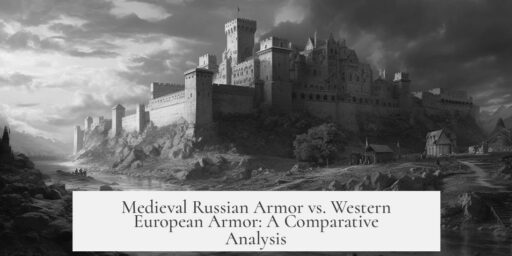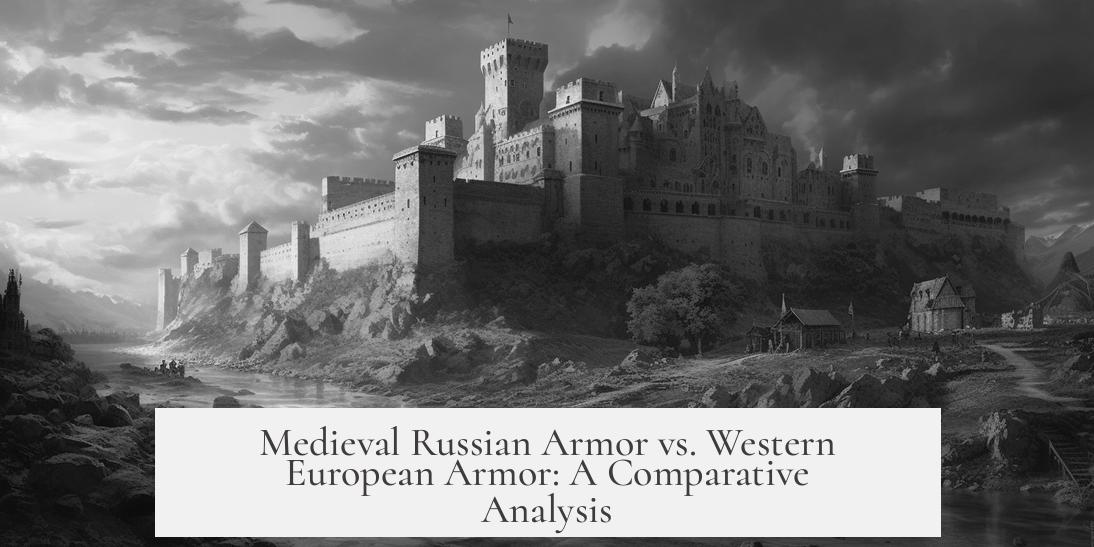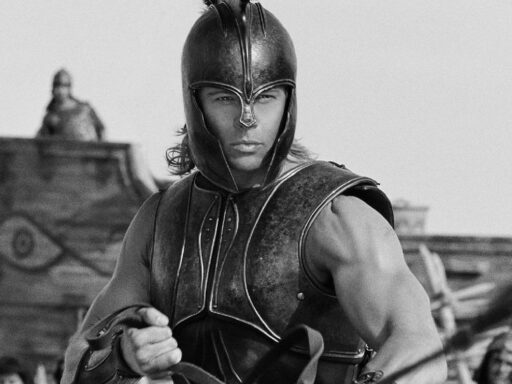Armor in medieval Russia differed from Western European armor in style, influence, and design, though both gradually evolved toward comparability over time.
Russian armor strongly reflects Byzantine traditions, closely resembling the armor of Byzantine cataphracts. This influence is evident in the scale-like, late antique style of the armor, which contrasts with Western Europe’s full plate armor appearing in knights. Russian armor also displays eastern traits, influenced by Scythian ancestors, giving it an almost Japanese aesthetic.
Early medieval northwestern Russia shared similarities with Nordic armor styles. Moving south, Byzantine trends dominated. Steppe peoples such as Bulgars, Magyars, Kumans, and Mongols introduced their own styles, shaping Russian armor further. From the 10th century onward, Mongolian and Persian/Muslim arms and armor became common, adding complexity.
Western Europe developed its armor differently. Early European knights had less comprehensive coverage, but by the mid-14th century armor advanced towards full plate protection covering arms and face. This shift corresponded less with Eastern trends, where lighter protection suited horse archery tactics. Over time, Eastern armor also improved protection significantly.
During the Renaissance (16th century and beyond), European armor styles increasingly influenced Russian designs. Russian forces imported Western armor, especially during conflicts with Poland. Despite this, regional and temporal differences persisted within the vast territory of medieval Russia, which comprised many kingdoms and states, making a uniform description challenging.
Summary of distinctions and evolution:
- Russian armor reflects Byzantine, Eastern, steppe, Mongolian, and later Persian/Muslim influences.
- Western European armor evolved into full plate armor with heavy protective coverage.
- Early Russian armor favored scale-like and partial protection due to cavalry tactics.
- Armor developments converged by the Renaissance with Western imports into Russia.
- Regional diversity in Russia complicates a single characterization of its medieval armor.
How Did Armor in Medieval Russia Compare with Armor in Western Europe?

The armor in medieval Russia and western Europe shared a common goal—to protect the warrior—but their styles, influences, and designs were quite different, shaped by distinct historical, cultural, and geographical contexts. Let’s dive into the fascinating armor journeys of these two regions, and see why Russian armor often feels like it came straight from the Byzantine courts or the steppes, while European armor looks like the classic metal knight clichés we all recognize.
At first glance, Russian armor looks nothing like the gleaming, full-plate suits commonly associated with Western Europe. That’s because Russia’s armor was a melting pot of Eastern, Byzantine, and Steppe nomad influences, contrasting sharply with the Western trend toward plate armor by the later Middle Ages.
Byzantine Roots and Eastern Echoes
Medieval Russia inherited much of its armor style from the Byzantine Empire, which was the dominant cultural and military influence in Eastern Europe for centuries. Russian warriors wore armor resembling Byzantine cataphracts—heavy cavalry units known for scale-like armor and flexibility. Imagine armors made of small metal plates or scales sewn onto garments, designed to allow movement and deflect arrows.
This Byzantine influence differs greatly from Western Europe’s late-medieval styles that shifted toward full steel plates covering nearly every part of the body, refined through centuries of local blacksmithing expertise. For instance, a 14th-century Russian knight might have worn a lamellar or scale mail vest, while his Western contemporary was transitioning from chainmail to articulated plate armor with fully enclosed helmets.
Eastern and Steppe Inspirations
Eastern influences add even more spice to the Russian armor story. The east-leaning, almost Japanese-styled armor hints at connections stretching back to Scythian ancestors—ancient horse-riding nomads known for their mobility. Later, steppe nomadic peoples like the Bulgars, Kumans, Magyars, and Mongols added their signature touch.
This meant armor in medieval Russia often prioritized mobility for horse archery—thin but effective protection that didn’t weigh the rider down or restrict movement. The steppe’s famed light cavalry tactics demanded less face and arm coverage early on, unlike the rigid Western knights locked in heavy mail and plate.
Western Europe’s Step Towards Full Plate Armor

Meanwhile, Western Europe was busy perfecting full plate armor. By the 14th and 15th centuries, European knights wore nearly head-to-toe steel suits, designed for close combat and jousts. Helmets that fully enclosed the head, gauntlets protecting the hands, and greaves shielding the legs became standard.
The design of Western armor focused on deflecting the blows of swords, axes, and lances in melee combat. The compact, articulated steel plates allowed movement but demanded the wearer’s strength and conditioning. It was heavy labor wearing such suits, but undoubtedly impressive on the battlefield.
Change Over Time: A Tale of Blending and Adoption
Russia wasn’t static in its armor traditions. Starting in the 10th-11th centuries, Mongol and Persian/Muslim influences began altering the armor landscape. Persian mail and lamellar designs, combined with Mongolian tactics, merged with the earlier Byzantine and local traditions.
By the 16th century, as Russia became more involved in European conflicts—such as wars with Poland—Western plate armor styles began filtering into Russian military gear. Some Russian nobles and soldiers started adopting imported Western suits of armor, blending the old scale-based armor with the new plate designs.
This cross-pollination marks a fascinating evolution—Russian armor gradually incorporated European advancements in metallurgy and design, showing that even remote cultures are not immune to trends and practical innovations.
The Challenge of Size and Diversity
It’s crucial to remember that medieval Russia wasn’t a monolith but a vast collection of kingdoms, principalities, and tribal lands. Armor styles varied widely across regions and time periods. Northwestern Russia absorbed more Nordic styles, similar to Viking armors, while southern regions remained heavily Byzantine and Eastern influenced.
Likewise, Russian armor in an early 11th-century Novgorod soldier might look drastically different from a 15th-century Muscovite warrior’s equipment. Geographic and political differences add complexity when attempting a one-size-fits-all comparison with Western armor.
Why Does This Matter?

Knowing how Russian armor compares with Western Europe’s challenges the oversimplified idea that medieval armor was just a steel suit. Russian armor tells a story of cultural crossroads—legendary horse archers, emperors, nomads, and knightly traditions intersecting.
“Armor is not just protection; it’s a cultural mirror reflecting the warrior’s environment, tactics, and neighbors.”
For history buffs or re-enactors, this means if you want authentic Russian medieval armor, searching for Byzantine-style lamellar or scale armor is better than mere Western plate copies. Museums and historians often identify these differences through the small details: scale patterns, materials, fastenings, and helmet shapes.
A Few Fun Tidbits
- Western knights might struggle to shoot a bow from horseback, but Russian horse archers thrived in it, so lighter armor made sense.
- The all-metal plate you imagine was rare in Russia before the Renaissance—Russian soldiers preferred composite armor mixing mail, scales, and leather.
- Because Russia faced hordes from the steppes repeatedly, its armor adapted faster to mounted combat and ranged weapons.
Final Thoughts: East Meets West in Steel
Medieval Russian armor is a testament to adaptability and cultural fusion. While it may lack the shiny pizazz of a European knight’s plate armor, it offers a glimpse of a dynamic military tradition shaped by Byzantium, the steppe, Persia, and eventually Europe. Western Europe perfected the art of the full plate suit, but Russia mastered the balance between protection and mobility fit for its unique battles.
So next time you picture medieval warriors, remember: not all armor clinks the same, and Russia’s armor tells a story as rich and layered as the land it defended.




